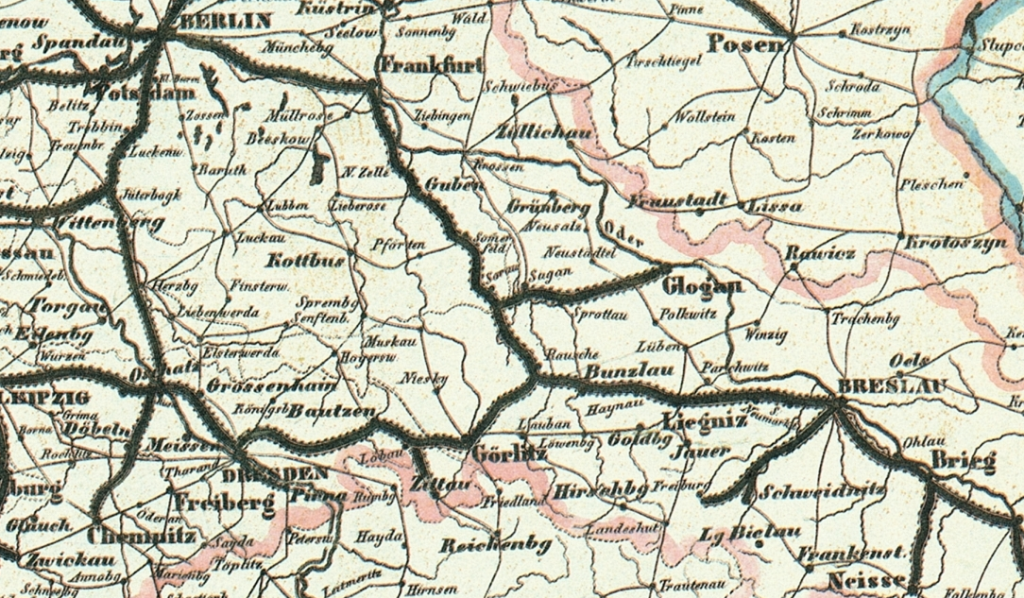Berlin and Beyond
Notes from an American in Germany

Berlin. Always becoming, never to be?
Notes from a German-American in Berlin.
From the blog
-

The Jewish Ghetto in Kraków, 1941-1943
Some pictures from the Schindler Museum and the Jewish Ghetto in Podgórze, Kraków, Poland. Yes, you’ve seen the film. But this strange yet fantastically organized museum, in the original Schindler factory on a road so small you can barely find it, is a revelation. How all three groups lived, fought, and died: Poles, Jews, and…
-

Boy Meets Tractor
Some highlights from the small but fascinating Museum of Communism in Prague. Worth checking out to remember a time that wasn’t all that long ago.
-

A Kraków Tour
Some scenes from a trip to Kraków, Poland a few years back. Lots of shots of scenes from “Schindler’s List” film locations (including the fascinating and sobering Factory Museum), the former Jewish Kazimierz district we stayed in, and Old Town with the Wawel Cathedral and the tombs of Polish leaders from the Middle Ages into…
-

Why B2B Needs Branding
“Brands” in the most frequently understood sense of the term (especially among laypeople) refer to well-known, everyday consumer products (often including the companies that make them). From surveys like, “What brand of toothpaste do you use? What brand of car do you drive? (Or maybe: What brand of cigarettes do you smoke when no one…
-

Why B2B Needs Content
It’s clear why business-to-consumer companies are frequently also ‘content’ companies. Telling a meaningful story about a product or service requires a narrative everyone can follow and engage with. Does a software or technology firm need to do this? Don’t they just need to showcase the technology and let their readers put it together themselves? And…
-

Golden Prague
A short afternoon tour of the Prague Castle, St. Vitus Cathedral built by Charles IV, the Golden Lane and the secret film archive, and the Malá Strana…
-

The Ghosts of Novodevichy
A tour of the celebrities of Novodevichy Cemetery, from Raisa Gorbachev to Anton Chekhov, Prokofiev, Shostakovich, Stalin’s unhappy family, and more Soviet generals than you ever thought possible.
-

Warsaw Rising
Unedited slideshow from an all-too-short weekend in the Polish capital, including the incredible POLIN Museum of Jewish-Polish History. Enjoy!
-

The Linguistics of Branding
My day job (that takes a few nights as well) is helping companies connect to their customers through ‘verbal branding’: that is to say, positioning, messaging, corporate language, and brand voice. It’s somewhat unusual in that to many people, brands are visual constructs, consisting of logos, color schemes, visual vocabulary, and guidelines. However, that’s not…
-

Of Peanuts and Personas
Does our understanding of brand and user personas derive, at least partly, from the classic personality archetypes we read about as kids? Even the names you see in a typical customer segmentation, such as “Sally Social Media” and the like, suggest a possible source: Peanuts characters.
-

Stralsund Has a Red-Brick Gothic Town Hall. Do You?
No, you don’t. And we all know why. You had your chance to be a major Hanseatic trading city back in the 1300s. You had salt (salt!), fox pelts, the whole show. So what happened?
-

Riding on the Metro
Hop a train on the most exuberant Metro in the world–the Soviet baroque stations of the 1940s and 50s.
-

Mothers’ Day Weekend in Berlin
Arrived in Germany just in time for Mothers’ Day. Given that my mother actually grew up in Berlin, spending the day here is somewhat apropos. Did some wanderings through the city center, the neighboring city of Potsdam, and enjoyed an awesome room at my hotel by the Hackescher Markt. Next stop: Kraków…
-

The Ghosts of Berlin
A Sunday bike tour of a forgotten corner of Berlin, along the Mauerweg immortalized by Tilda Swinton in the documentary film The Invisible Frame.
-

Take a Ride on the Berlin-Wrocław Railway
The Kulturzug (“Culture Train”) is the only direct connection from Berlin to the Polish city of Wrocław, formerly the German city of Breslau, and one with a formidable history behind it, as the route was one of the very first long-distance rail connections in Europe, going all the way back to 1842. I was lucky…


